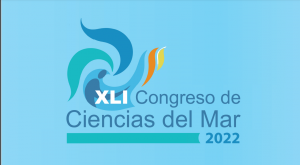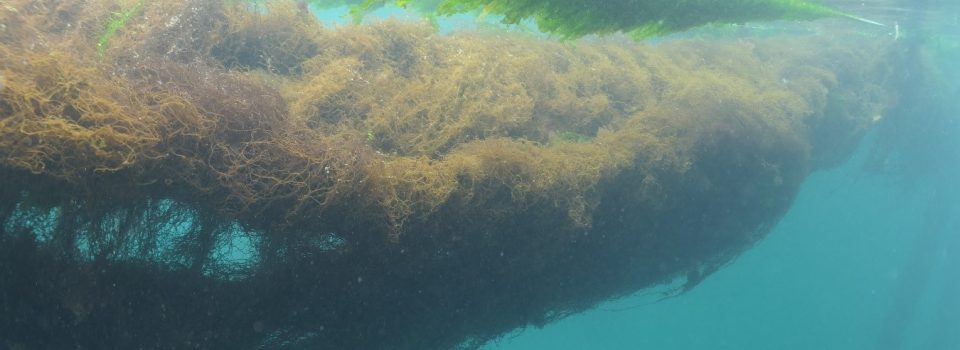IFOP participates in XLI Marine Sciences Congress
November 6th, 2022 With interesting topics focused on Consumption of Seafood, Management Areas, Small-Scale Aquaculture, Biogeochemical Modeling
With interesting topics focused on Consumption of Seafood, Management Areas, Small-Scale Aquaculture, Biogeochemical Modeling
Today begins XLI Marine Sciences Congress , organized by Universidad Catolica de la Santisima Concepcion (UCSC) and Marine Sciences Chilean Society (SCHCM)
The congress will be held presencially at UCSC San Andrés Campus in Concepción city .
IFOP will participate with interesting topics focused on the Consumption of Seafood, Management Areas, Small-Scale Aquaculture, Biogeochemical Modeling.
Researchers Gonzalo Olivares and Johanna Rojas will present Calculation of per capita consumption of seafood in Chile and its usefulness for the design of public policies. This topic arises as a result of a request from Subpesca to know year after year how many seafood products Chileans consume due to the public-private strategy promoted by the Undersecretary of Fisheries and Aquaculture to promote the consumption of seafood in Chile. Chile and reach the goal of 20 kilos per person in the year 2027.
Small Scale Aquaculture Presentations
Small-scale crops Effect and ecological role: conservation of ecosystemic services new APE approach
Authors: Luis Henríquez-Antipa, Sebastián Cook, Francisco Galleguillos, Sandra Saavedra & Francisco Cárcamo
Emerging banks under mussel farms (BEms) in Los Lagos region were studied, observing reference sites functional differences. Data was integrated into a Loop analysis determining a co-culture stability (Mytilidae-Algae) in the ecosystem. The co-cultivation and exploitation of BEm preserve a dynamic balance, only if anthropic effects are regulated and the function of key species is protected. This Small-Scale Aquaculture (SFA) approach can contribute ecosystem services (BEms), limit the ecological footprint (use of BEms) and increase the potential of SFPA to conserve benthos function.
Small-scale farming effect and ecological role : a conservation aquaculture approach
Authors: Luis Henríquez-Antipa, Sebastián Cook, Francisco Galleguillos, Sandra Saavedra & Francisco Cárcamo
In Los Lagos Region, emerging banks were characterized under different scales mussel farms, observing differences with reference sites. This information was integrated into a network analysis model determining co-culture (Mytilidae-Algae) stability within the ecosystem. Although results suggest that cultivation and the subsequent exploitation of the underlying bank can preserve a dynamic equilibrium, the effects of cultivation and the function of key species should be regulated, highlighting the self-regulation of anthropic effects. This type of approach in APE could contribute with ecosystem services (Generation of banks), regulation of the ecological footprint (Use of banks), increasing the potential of conservation APE (Benthic habitat functioning)
Biological attributes of populations of Durvillaea incurvata distributed from Chiloé to Valparaiso: gender proportion, growth and associated community
Authors
1 Natural Resources and Environment Department Universidad de los Lagos, Puerto Montt, Chile. agutierrez@ulagos.cl
2 Aquaculture and Agrifood Resources Department , Universidad de los Lagos, Osorno, Chile.
3 Repopulation and Cultivation Deapartment, Fisheries Development Institute, Puerto Montt, Chile.
4 Fisheries and Aquaculture Undersecretariat, Puerto Montt, Chile.
5 CREATE Fishing Development Institute. Puerto Montt, Chile.
AMERB Connectivity Mosaic and self-recruitment between Fresia and Ancud (Handling, Management and Sustainability of Coastal Zones)
Author: Catherine Gonzalez
Larval dispersal of loco, sea urchin and limpets was simulated from 56 Management Areas (AMERB) between Fresia and Ancud, a biogeographical transition zone where 50% of the national quota of loco is landed. High spatial variability was observed in connectivity dynamics identifying a high percentage of sites where self-recruitment predominates. 12 AMERB would contribute more than 50% of studied area larvae, while 1 AMERB stands out for its contribution of limpet larvae.
Towards an hydrodynamic models repository on Chilean coast (Physical Oceanography Module)
An hydrodynamic models survey developed for the coast of Chile was carried out. 67 models based on 12 different computational codes were found. 17 models had high resolution (greater than 3 km) and 19 were climatological. Models Overlapping was observed, duplicating modeling efforts in the same coastal area and lack of models in many areas. The need to create a national repository of hydrodynamic models will be discussed.
BIOGEOCHEMICAL MODELING IN A CHANGING OCEAN: ADVANCES AND CHALLENGES IN NORTHERN PATAGONIA
Author: Dr. Jurleys Paola Vellojin Furnieles
The oral presentation contemplates showing the results of work carried out up to date on biogeochemical modeling implementation such as NPZD and PISCES for northern Patagonia coastal system (40 – 50°S). In addition, the potential of biogeochemica facing environmental contingencies (i.e., anoxic zones or harmful algal blooms) is highlighted.
The problem is not larvae, the problem is losses: mytilid seeds X-ray uptake
Authors: Stuardo Cristina, Oyarzún Marina, Herrera Macarena, Segura Cristian, Opazo David
Being mussel farming the second aquaculture activity in Chile, it is important to know factors that influence it. Within the framework of the Monitoring and Surveillance Program on mussels larval availability for aquaculture activity sustainability in chilean southern zone. Carried out by IFOP, different follow-ups have been carried out on mussel seeds collection, taking into account not only larvae supply, but also collectors settled seeds loss , this being a crucial factor in the amount of seeds that can be harvestedd at the end of a season.
Press related links
